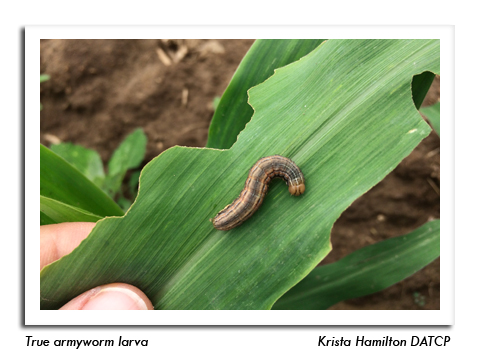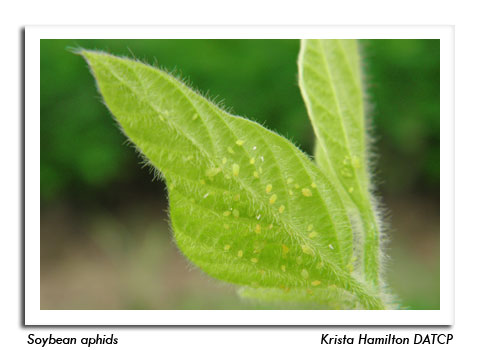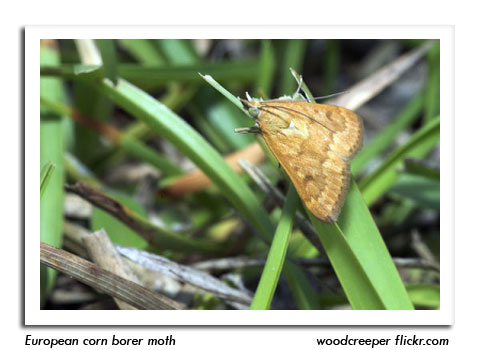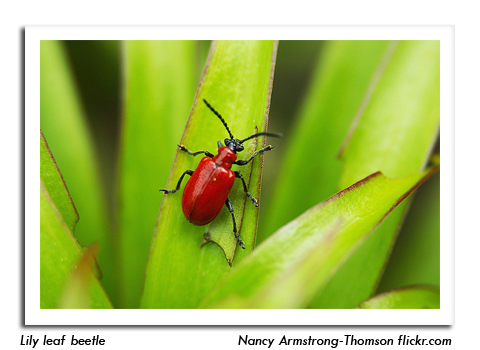
 |
|
|
Looking Ahead
Volume 64 Number 7 Date 06/13/2019 TRUE ARMYWORM - Another very large capture of 1,110 moths was reported from the Janesville black light trap site during the week ending June 13, and minor feeding damage is appearing on plants in the perimeter rows of corn. The recent heavy local moth flights suggest that more concentrated scouting of corn, oats and wheat should begin at this time. High populations of true armyworm larvae are more likely to develop in cool, wet years. EUROPEAN CORN BORER - Moths are depositing eggs on vegetables at southern and central locations where 450 degree days (modified base 50°F) have been surpassed. Snap beans, peppers, potatoes and various weed hosts will be used for oviposition since corn taller than 18 inches is not widely available. The first ECB flight is expected to peak by June 20 in south-central and southwestern Wisconsin. CODLING MOTH - The spring flight continued for the second week, following delayed emergence due to unseasonably low temperatures. Orchards that recorded the biofix on May 31-June 2 have accumulated about 140-180 degree days (modified base 50°F) as of June 12. For most sites where the flight has been inconsistent, controls directed against first-generation larvae will be well timed if applied 350 degree days after the biofix date. Based on forecasted temperatures, the treatment window should open by June 22-24 for southern orchards. EURASIAN HEMP BORER - A substantial moth flight is underway in the Delavan area of Walworth County. Moths have become abundant in the past two weeks and heavy egg laying is expected. A report from a local hemp grower indicates the moths are diurnal and cannot be monitored with black light or sticky traps, thus routine scouting of hemp plants is the only effective approach to determining the need for EHB control. CORN EARWORM - Last week's active weather carried a few early corn earworm migrants into southern Wisconsin. Nine specimens were registered at Janesville from May 30-June 5 and nine more moths were collected this week. Corn is not at a critical growth stage for corn earworm damage to occur, but other favored vegetable hosts include asparagus, cabbage, cantaloupe, cucumber, eggplant, lettuce, lima bean, melon, okra, pea, pepper, potato, pumpkin, snap bean, spinach, squash, sweet potato, and watermelon. LILY LEAF BEETLE - This newly-established invasive red beetle is appearing in the Mosinee and Stevens Point areas. Portage County is currently the southernmost Wisconsin county in which the lily leaf beetle is known to occur. The northernmost record of the beetle is from Merrill in Lincoln County. Lily leaf beetle was first discovered in the state in 2014 near Kronenwetter and Mosinee in Marathon County. Recommended controls include manually picking the adults and larvae from lilies or applying an insecticide labeled for use on ornamental plants. More than one application may be needed. -- Krista Hamilton, DATCP Entomologist 





|
|
|